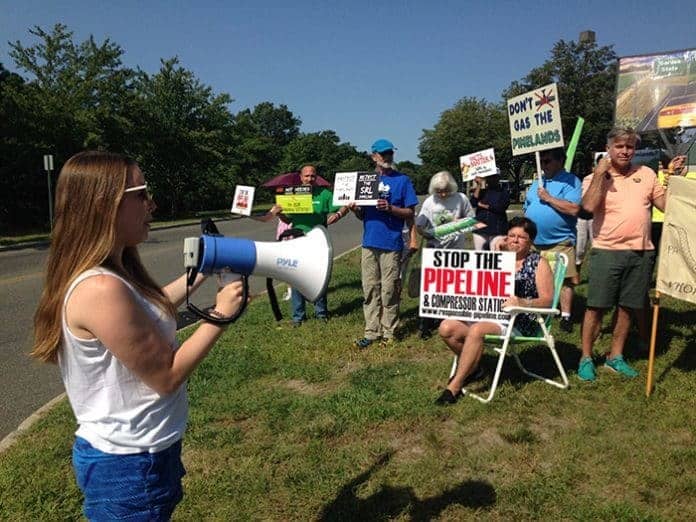
PEMBERTON – The executive director of the Pinelands Commission has recommended that the commission members approve the Southern Reliability Link that New Jersey Natural Gas is planning on building between Chesterfield and Manchester.
 The Pinelands Commission is meeting at 9:30 a.m. on Sept. 8 at the Pine Belt Arena (which will be rechristened the Hackensack Meridian Arena on Sept. 1) at Toms River High School North. During this meeting, they will vote on whether or not to accept executive director Nancy Wittenberg’s recommendation to allow the pipeline under certain conditions.
The Pinelands Commission is meeting at 9:30 a.m. on Sept. 8 at the Pine Belt Arena (which will be rechristened the Hackensack Meridian Arena on Sept. 1) at Toms River High School North. During this meeting, they will vote on whether or not to accept executive director Nancy Wittenberg’s recommendation to allow the pipeline under certain conditions.
The conditions involve such matters as making sure debris is removed properly, using certain native grasses for revegetation, keeping sediment from falling into wetlands and a few others. One longer condition would require a biologist familiar with Pinelands species to be present at all times of construction, to be able to identify any threatened or endangered species that might be impacted. Another would require an engineer who is an expert on the particular kind of drilling to be present while that is taking place, to prevent leaks of bentonite, a chemical used in drilling.

“The Pinelands Commission hereby finds that there is ample evidence in the record that demonstrates that the proposed development with the conditions recommended by the Executive Director conforms to the minimum standards of the Pinelands Comprehensive Management Plan,” the recommendation read.
The Pinelands Commission only has governance over the 12.1 miles that would run through the Pinelands.
According to the recommendation, there are three zoning types that the pipeline would pass through: the military base (10.45 miles), the Rural Development Area (1.42 miles) and Regional Growth Area (.21 miles). The pipeline would be a public service infrastructure, which is permitted in those areas the way the plan is drawn.
The portions of land that pipeline will pass through will have some wetlands, which normally require a 300-foot buffer. However, the letter states that in a majority of these areas, the pipe would go beneath existing roadway or a shoulder, so it is not like the pipe would be going through untouched woods.
There is one spot where .42 acres of trees (mostly pitch pines) would be removed and 390 square feet of wetlands would be disturbed. The letter stated that this would not create too much of a negative effect, and the need for the pipeline is greater than the minimal effects.
No threatened or endangered species were located near the area, but NJNG will provide fencing anyway.

The recommendation also addressed the numerous comments made during the public comment period.
The Sierra Club offered a rebuttal to the recommendation.
“In a betrayal of the people of the Pinelands, Nancy Wittenberg has sided with the gas companies over the public that they are supposed to work for. She is working for the gas companies instead of doing her job of protecting the Pines. The Commission wrote the original resolution behind closed doors and passed it during a closed session. The public had no chance to review or comment on it, and didn’t even know about it since it wasn’t on the agenda. We believe the Executive Director of the Pinelands Commission’s exceeded her authority by unilaterally determining that the pipeline was consistent with the Comprehensive Management Plan. This decision circumvented a public hearing and further vote by the Pinelands Commission, which we believe is against the Pinelands Protection Act,” said Jeff Tittel, Director of the New Jersey Sierra Club. “The SRL pipeline violates the Comprehensive Management Plan and should be rejected. By rubberstamping it, the Pinelands Commission is selling out our environment and drinking water. We will continue to fight this in court.”
The pipeline will promote sprawl and overdevelopment in the area, the release from the Sierra Club read. “It also poses a safety threat by bringing dangerous fossil fuels right through our backyards. The Pinelands is a UN biosphere reserve and one of the largest sources of fresh drinking water on the east coast. This project would put the environmentally sensitive lands, as well as drinking water for thousands of people, at risk.”






